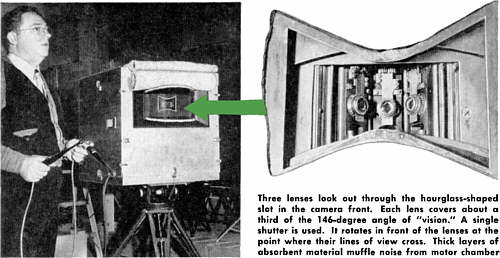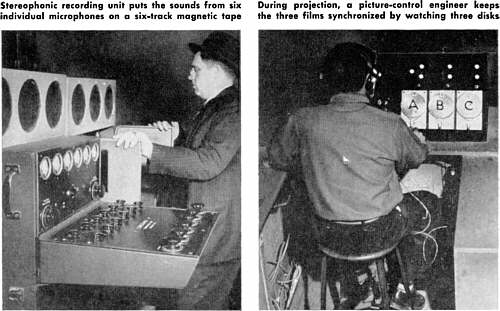So real does the picture seem that you're not in a Cinerama show more than a few minutes
before you react physically. You are in a boat at
Cypress Gardens, Fla., surrounded by tropical
flowers and swamp jungle. A wisp of Spanish
moss dangles in front of you, so you reach out to
swat it aside. You lean sideways to right yourself
as the boat tips when someone else steps into it.
You duck so you won't smack your head as it carries you under a footbridge.
Across the lake at the boat jumps, racy outboards
roar up from behind you, zoom up ramps, fly into
the air right in front of you and plunge into the lake
again. You duck to avoid the spray that showers
toward you. The boats speed off to the left
of the screen and the sound follows them.
|
|
|
Cinerama is the result of 15 years of research and
the expenditure of millions of dollars. Its inventor,
Fred Waller, is a mechanical and photographic
wizard. He's the father of the first photographic
printer and timer, which, incidentally, is still being
used. He created a still camera to take a 360-degree
picture and a remote-recording wind-direction-and-velocity indicator.
Most famous of Waller's inventions is an aerial-gunnery trainer used by the Navy in World War II.
In it, the trainee sat beneath a domelike hood, or
sky screen, on which five synchronized projectors
threw movies of enemy planes that dove on the
gunner every which way. The trainer was a step
along the road to Cinerama but the theory behind it
|
|





